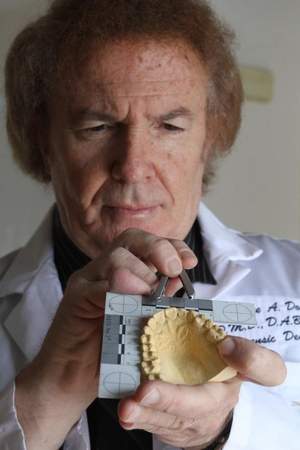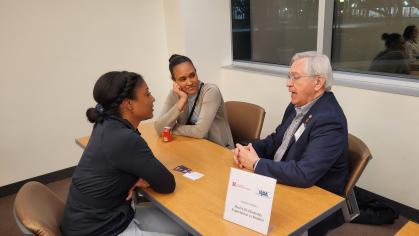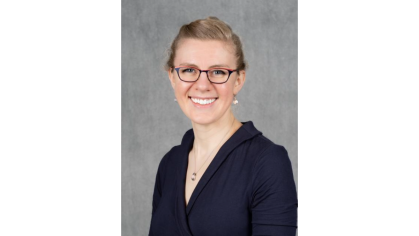Alum Works to Help Others Recognize Signs of Child Abuse
Larry Dobrin had just opened his first dental practice more than 35 years ago when a mother arrived with her child, complaining that he’d kept her awake all night crying because of a toothache.
Dobrin, an RSDM alumnus, noticed many signs of child neglect. The child was dirty, his teeth were decaying and he had lice. Faint bruises on his body were evidence that he was also abused. Dobrin wanted to find help for him, but wasn’t sure what to say or do. He treated the emergency toothache and never saw him again. “At the time, if you saw what looked like abuse, you more or less ignored it and did your job. You didn’t get involved,’’ says Dobrin, who graduated in 1975. “There was no training, no information, no protocol in place to report it if you saw it.’’
After talking to his friend, who was the Union County sheriff, Dobrin learned how to work with law enforcement and child protective services if he suspected a pediatric patient was abused. He also learned to tell the difference between an accidental injury and one that’s inflicted deliberately. That knowledge helped him save lives and led him to become a forensic dentist.
Although he has worked to identify victims of 9/11 and several natural disasters, like Hurricane Katrina, he specializes in cases of child abuse in his position as chief forensic dentist for New York City-Office of Chief Medical Examiner. He's also a forensic consultant for the Regional Medical Examiner’s Office of New Jersey and the office of medical examiners in Union County and Rockland County, New York. “I’ve seen the worst in life and death, but child abuse and neglect situations are the cases that really get me because it didn’t have to happen,’’ says Dobrin, who has a general dentistry practice in Roselle Park. “It’s one of those things that could have been prevented with early detection.’’
For more than three decades, Dobrin has dedicated himself to teaching healthcare professionals how to spot child abuse and how to report it. He teaches a two-hour course in New York and New Jersey, in addition to offering it each year to third-year dental students at RSDM as a visiting associate professor.
In the course, Dobrin instructs students to look for evidence of repeated physical trauma: “pattern injuries,’’ such as abrasions on the skin from being hit with a belt or tied up with a rope; different color bruises, indicating older and newer injuries; signs of multiple cigarette burns; and abrasions inside the mouth from parents who try to silence a children by shoving something between their lips. “A lot of abuse happens when parents are just trying to shut the child up,’’ he says.
His course, which includes graphic photos and shocking descriptions of violence, can be profoundly disturbing. But the images and anecdotes are necessary. “It’s easy to say, ‘look out for child abuse,’ but you if you don’t show them what to look for, it won’t be very effective,’’ he contends.
According to Dobrin, there are three million reported cases of child abuse in the U.S. annually, and each case he handles is heart-wrenching. “I can’t get use to the fact that it’s rampant. I can’t fathom what happens to these kids. Every time it comes up, I’m as taken aback as someone who has never seen it before.’’
Dobrin himself has three grown children, including his son, Keith, who graduated from RSDM in 2012. In addition to his forensic work, Dobrin has served as the president of the American Society of Dentistry for Children and volunteered on state committees on child abuse and neglect.
Although his work in forensics can take an emotional toll, he’s gratified to be making a difference in individual cases and in his role as an educator. His general dentistry practice provides a welcome break. “I think witnessing the things I’ve seen makes me enjoy my normal dentistry so much more. I’m so happy to see my patients and their families and to be of value to them.”




